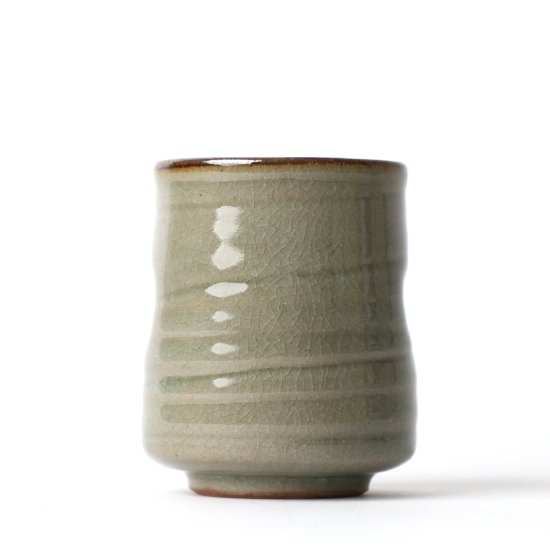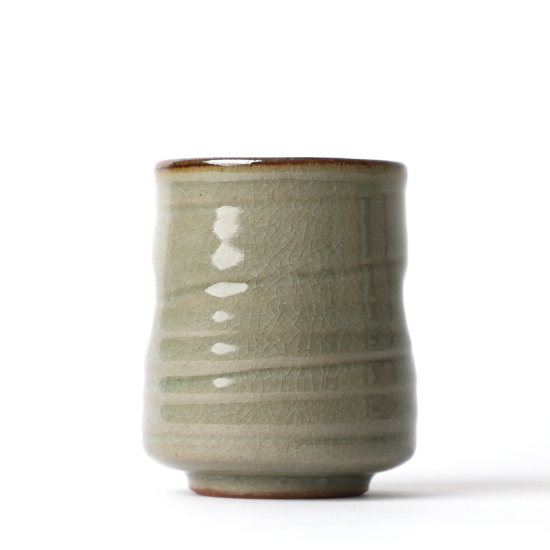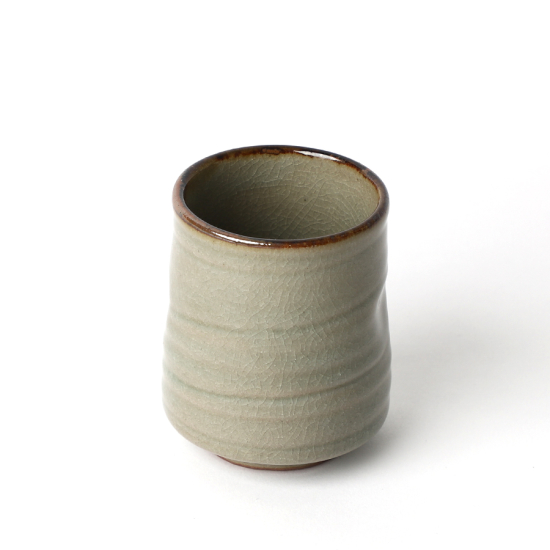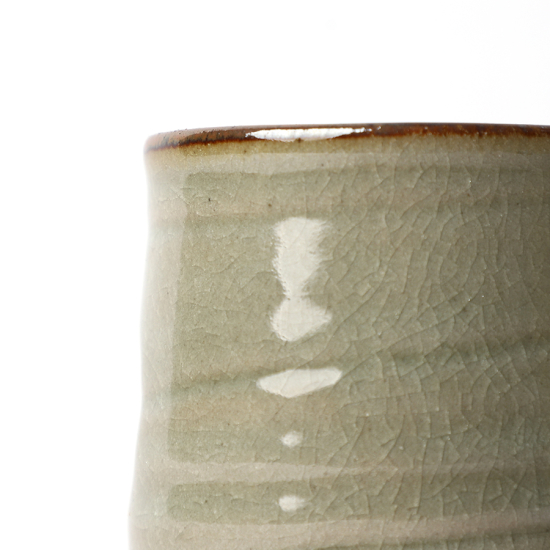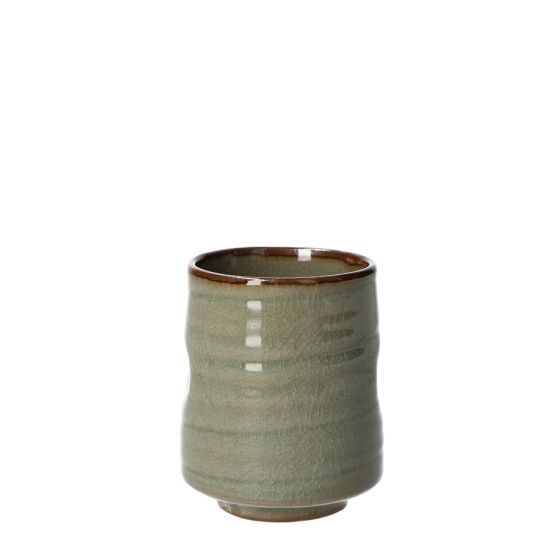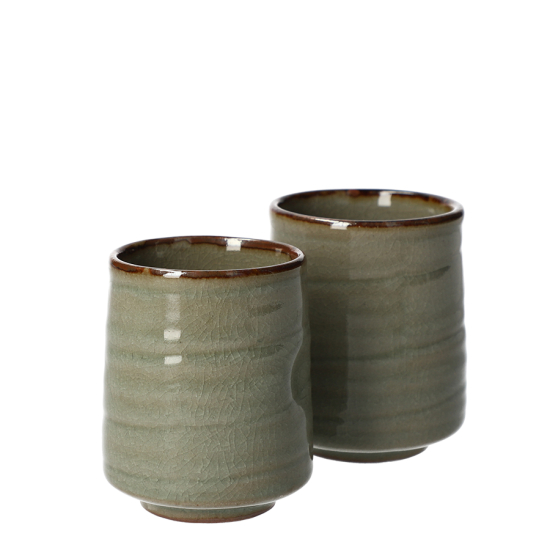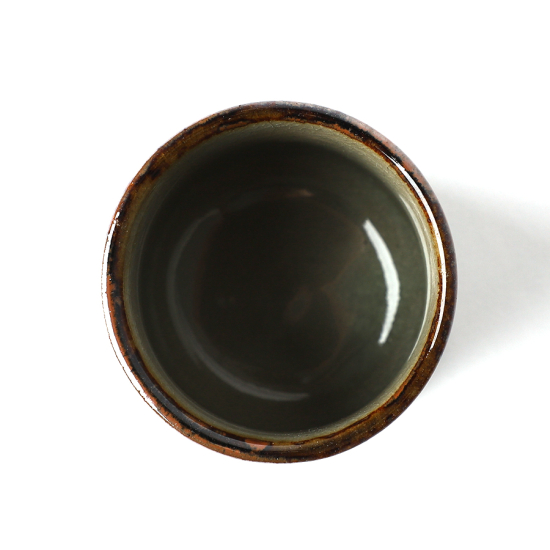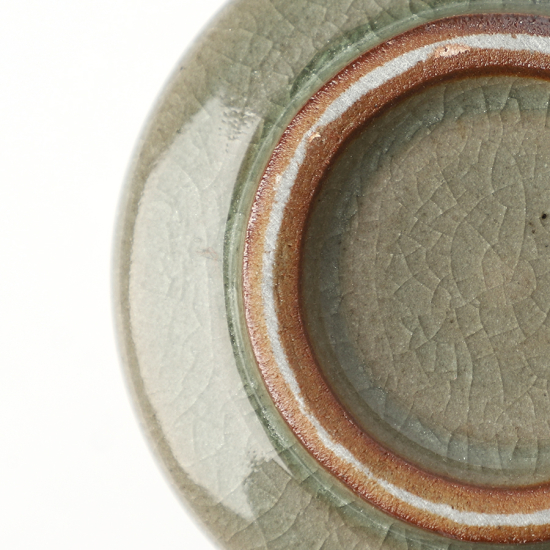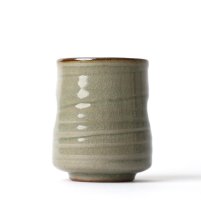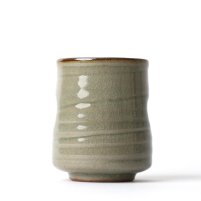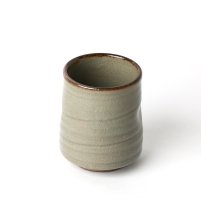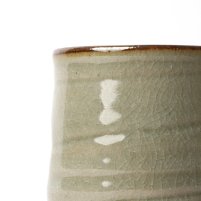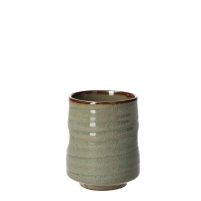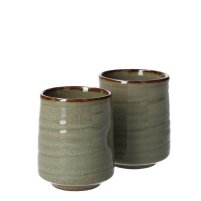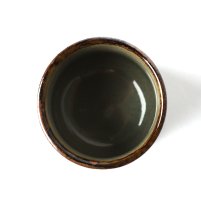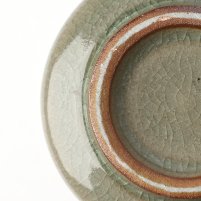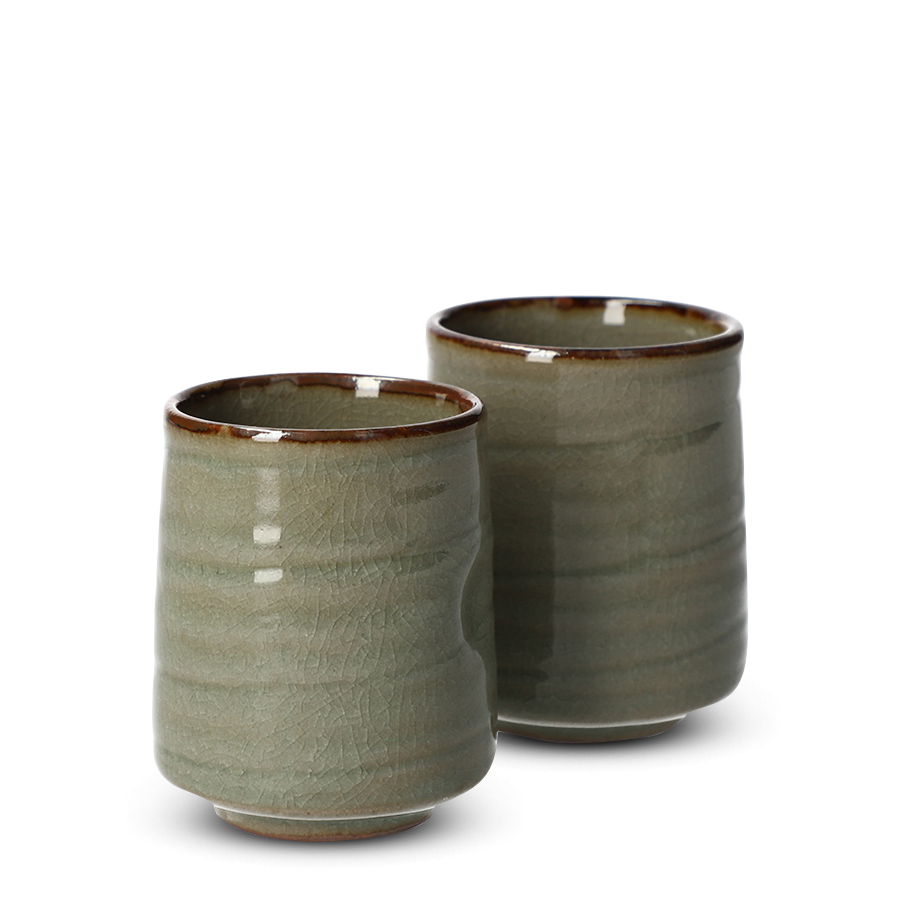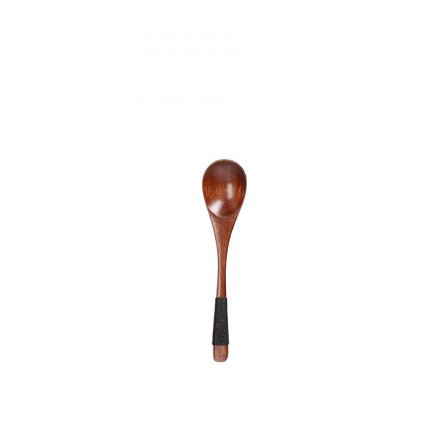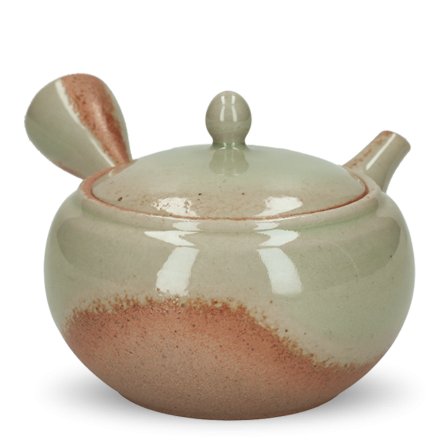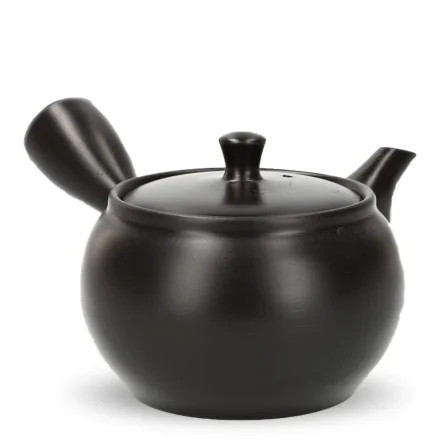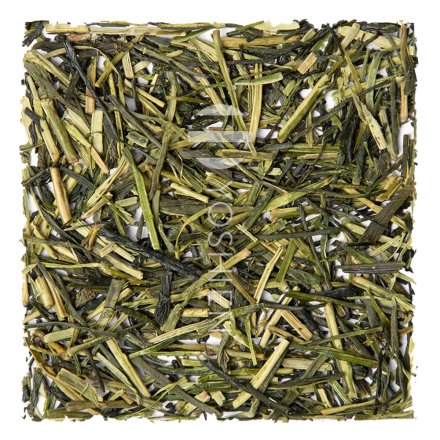Produced in the historic Mino province, present-day Gifu prefecture, Mino-yaki has a long ceramic history dating back to the 11th century, and since the 19th century has specialised in porcelain for everyday crockery. Mino ceramic production developed in correlation with that of Seto, in neighbouring Aichi prefecture, which was the location of one of the legendary Six Ancient Kilns or Rokkoyō (六古窯) of Japan. A variety of styles and glazing techniques were produced in Mino following the Chadō tea ceremony boom in the Momoyama period (1573–1615), including pale yellow Ki-Seto, jet black Seto-guro, off-white Shino and green/black Oribe wares.
Teacup Pair
Shibukusa
Mino
SKU
5462
A pair of authentic Mino-yaki his and hers porcelain Yunomi teacups in a soft olive green, ergonomically shaped with indentations for the fingers. These thick-walled, handle-free cups are particularly suited for teas brewed at higher temperatures, like Hojicha and Genmaicha.
| Product | Teacup pair set, olive green |
|---|---|
| Ceramic Style | Mino-yaki |
| Origin | Gifu, Japan |
| Volume | 180ml, 220ml |
| Dimensions | Ø6.5 x 8.2cm, Ø6.7 x 8.8cm |
| Weight | 188g, 230g |
| Material | Porcelain |



